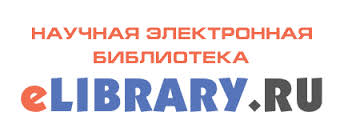ROLE OF WOMEN CHARACTERS IN THE NOVEL AND QUIET FLOWS THE DON BY M. A. SHOLOKHOV (BASED ON THE MATERIAL OF THE CHAPTERS DEDICATED TO THE VESHENSKAYA UPRISING)
Abstract
DOI 10.18522/1995-0640-2023-3-134-145
M.A. Sholokhov in the novel "And Quiet Flows The Don" created a unique gallery of original female images – the images of the Cossacks. This article is devoted to the consideration and understanding of the role of female images in the course of the narrative of the Vyoshenskaya (UpperDon) uprising – the key event of the third book and the novel "And Quiet Flows the Don" as a whole. When creating the characters of the Cossacks, Sholokhov seeks to follow the historical truth and embody the disharmonious state of the world, where women, faced with revolutionary and military events, for the most part do not take part in the political struggle and retain their inherent gender traits – female wisdom, sensitivity, comprehensive mercy. The artistic representation of the Cossack women in the chapters on the Vyoshensky uprising is considered as one of the characteristic features of M. A. Sholokhov, since it was in the system of female images that the spiritual and valuable essence of any non-warrior who fell into the events of the Civil War was embodied with particular clarity and relief.
Key words: M.A. Sholokhov, And Quiet Flows the Don, women character images, Veshenskaya uprising, literary style, stylistic dominant feature
Downloads
Published
How to Cite
Issue
Section
License
Copyright (c) 2023 Elena S. Makarova

This work is licensed under a Creative Commons Attribution-NonCommercial 4.0 International License.
Authors who publish with this journal agree to the following terms:
- Authors retain copyright and grant the journal right of first publication with the work simultaneously licensed under a Creative Commons Attribution License that allows others to share the work with an acknowledgement of the work's authorship and initial publication in this journal.
- Authors are able to enter into separate, additional contractual arrangements for the non-exclusive distribution of the journal's published version of the work (e.g., post it to an institutional repository or publish it in a book), with an acknowledgement of its initial publication in this journal.
- Authors are permitted and encouraged to post their work online (e.g., in institutional repositories or on their website) prior to and during the submission process, as it can lead to productive exchanges, as well as earlier and greater citation of published work (See The Effect of Open Access).


















